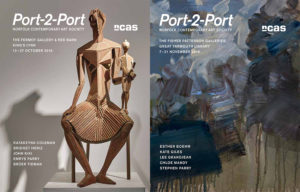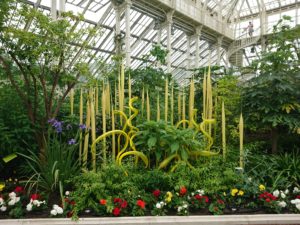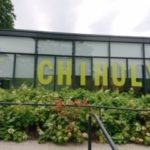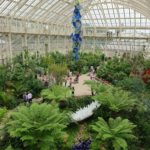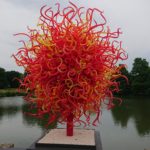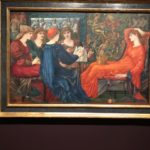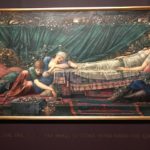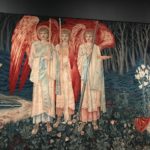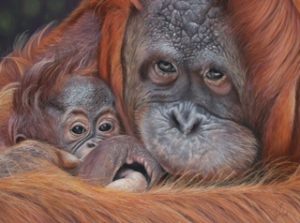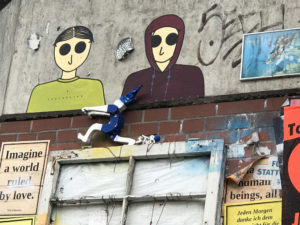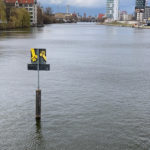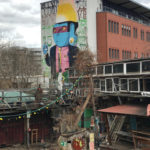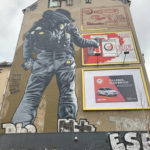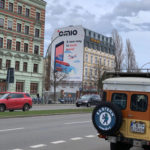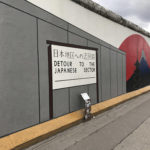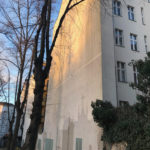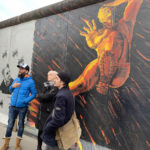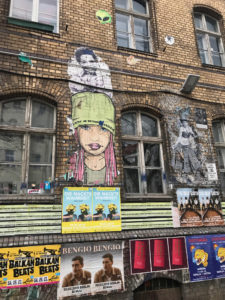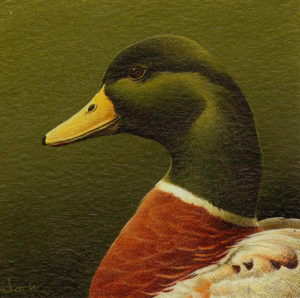
Mallard Portrait by David Cook. Actual size is 3″ x 3″.
On Tuesday 12 February at Knights Hill, David Cook, one of our professional artists, gave a really informative and interesting talk to around 20 members of the Association. There were so many members talking to him and asking questions afterwards I was worried he was not going to be able to get away home!
David is a Wildlife Artist and Paper Sculptor and his drawings, paintings, papercuts and sculptures are in civic, corporate, educational and private collections throughout the world.
David’s work has been published on greetings cards, calendars, magazine covers, techniques guides and included in several books. Wearing an apron featuring one of his designs, David briefly told us of his amazing background and his career which was fascinating. He has won numerous awards and can truly be called an International Artist.
David then demonstrated the different forms of Chromacolour (he prefers to use the pots rather than the tubes) and handed around many examples of his beautifully painted and meticulously detailed work. We also saw copies of his paper sculptures, paper cutting and articles of his which have been published in books on the subject.
David has kindly written the following to give the members who were unable to attend a
bit of background to Chromacolour.
What IS Chromacolour – by David Cook
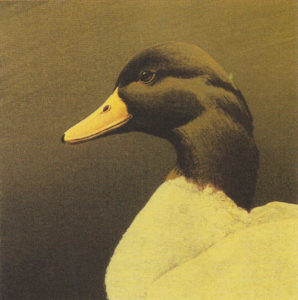
An undercoat of parchment colour covers the area of the subject itself. Concentration is on the eye of the bird making it as accurate and ‘alive’ as possible.
Probably the most innovative and versatile painting – and crafting – medium available to the artist and craftperson today. Yet, not quite in this form, Chromacolour has been used over many years. There cannot be a single person who has not seen an animated cartoon film – Walt Disney saw to that! So Chromacolour is a derivation of animated film industry paint.
Similar to an acrylic, this resin-based medium is soluble with water, yet waterproof once dry. It can be used directly from a bottle in a fluid, cream-like consistency, or from a tube with a thickness like toothpaste. Diluted with up to 500 parts of water, delicate, watercolour like results and colour-affecting glazes, can be achieved. Direct from bottle or tube this non-toxic paint, used in an impasto way covers beautifully, and interesting textural effects can be obtained with a painting knife. When set, the paint is not only
light-fast but pliable. Any surface can be used to paint on.
Very many thanks to David for a thoroughly enjoyable and informative evening.
For more information on Chromacolour, which is only available direct from the company,
Please visit their web-site: www.chromacolour.co.uk
For a more detailed background on David Cook, please go to the link below:
David Cook
Wildlife Artist & Paper Sculptor

Working from a page of pencil sketches, David Cook selects a portrait for the miniature painting.
Internationally acclaimed for his wildlife art and one of England’s leading paper sculptors, David Cook was born in Kent. He studied at the Medway College of Art, Rochester, and at the Regent Street Polytechnic in London. His drawings, paintings, papercuts and sculptures are in civic, corporate, educational and private collections throughout the world. Museum collections include Nature in Art, the International Centre for Wildlife Art.
He is an established tutor and innovative demonstrator of the Derwent range of pencils and has made three videos on various pencil techniques. In recognition of his contribution to pencil art he was elected the first Life Honorary Member of the UK Coloured Pencil Society. David’s paintings in Chromacolour are exquisitely detailed and increasingly collectable. After many years, he continues as an Artist in Residence at Wallsworth Hall, Gloucestershire. He has given workshops in America, Canada and Japan and has addressed an educational convention in America for Winsor & Newton.
David exhibits annually in London at the Mall Galleries with the Royal Society of Marine Artists, the Royal Society of Miniature Painters, Sculptors and Gravers and the Society of Wildlife Artists, in which he sponsored the PJC Award for Drawing. This international award continued for thirty-one years ending in 2018. As well as sponsoring drawing awards for the acclaimed National Exhibition of Wildlife Art for its twenty-two years, he was a member and Chaired the Selection Committee.
Awards include a Silver Medal at London Zoo, a Natural World Art Award, Commended in Bird Illustrator of the Year, Highly Commended both at Bristol Zoo and in the David Shepherd, Wildlife Artist of the Year exhibitions. His artwork has been auctioned by Christie’s in their wildlife Art auction, and by invitation of the late Lady Scott to benefit the Wildfowl & Wetlands Trust.
Commissions include a paper sculpture of the Seal of the City of Philadelphia, and a
life-size paper sculpture of a Mute Swan for a Chicago exhibition. David’s paintings have been commissioned and published as greetings cards for the Royal Society for the Protection of Birds, and especially successful for the Wildfowl and Wetlands Trust.
Other publications include greetings cards, calendars, magazine covers, techniques guides and inclusion in several books. He has written and illustrated numerous instructional articles for leading art and bird magazines and his first book was published by Harper Collins, reprinted and translated into Japanese. David has broadcast on radio, and been featured on regional and national television when filmed creating a paper sculpture of Pudsey Bear for the BBC Children in Need Appeal.
David’s award winning, unique and naturalistic papercuts – in this he is self-taught – are inspired by the great Polish tradition. They are widely exhibited and eagerly awaited by discerning collectors, in many countries. He was asked to write a review for a Contemporary Polish Paper Cutting book, featuring some of the Polish ladies who have inspired and encouraged him, in perfecting this fascinating international craft.
Selected images of David’s artwork are chosen and supervised personally by him, being published as open and limited-edition prints. Prints from his vast collection of slides and photographs amassed since his early photographic career with Country Life magazine, are also proving popular.
In acknowledgement of his long association with The Cumberland Pencil Company, David was presented to Her Majesty the Queen and Duke of Edinburgh when they officially opened the Company’s new premises in Cumbria during May 2008.
To celebrate the centenary of Sir Peter Scott’s birth, selected artists were invited to exhibit at the Cheng-Kim Loke Wildlife Art Gallery in Slimbridge, home of the Wildfowl & Wetlands Trust. David again successfully exhibited there in July and August 2009 and from March to May in 2013. Papercuts and a paper sculpture of Sir Peter were crafted and presented to the Trust.
For the sixth consecutive year, David has been selected for the David Shepherd Wildlife Foundation’s Wildlife Artist of the Year exhibition in the Mall Galleries. A drawing, papercuts and a miniature painting have sold to benefit the Foundation. In 2011, a painting of a Coscoroba Swan and a large two-layer papercut of a Grevy’s Zebra were both granted Highly Commended awards.
In 2015 David returned to Nature in Art, Gloucestershire, as Artist in Residence in September and October, which coincided with a major exhibition of paper in various art forms. In June 2018, David was again Artist in Residence and was invited to extend his residency to celebrate Nature in Art’s 30th Anniversary and to ‘Have Tea’ with HRH Princess Alexandra. One of David’s earliest papercuts, a Hawaiian Goose cut 27 years ago was exhibited in the Gallery whilst drawings, paintings, papercuts and a paper sculpture were shown in the Residency studio. www.nature-in-art.org.uk
To discuss or arrange commissions, contact the Federation of British Artists in London, the David Shepherd Wildlife Foundation, or the Wildfowl & Wetlands Trust, and locally, the West Norfolk Artists Association (westnorfolkartists@gmail.com), of which he is a member and sponsor of their People’s Choice Awards, or alternatively contact David himself at cook@hollyhouse3.myzen.co.uk

